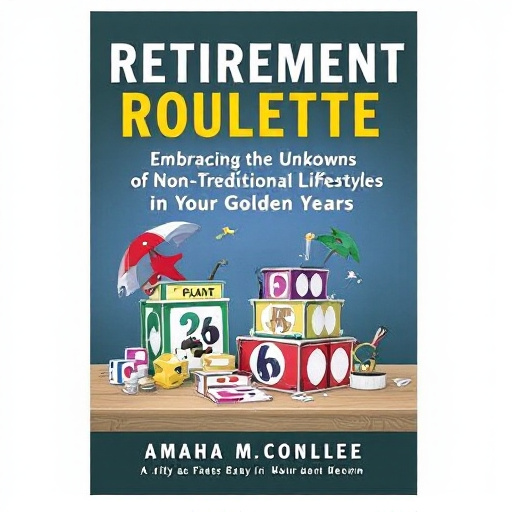Featured Articles
- "Beyond Savings: How Gardening and Hobbies Can Transform Your Retirement Plans"
- Reimagining Retirement: How Virtual Reality Could Transform Senior Living and Financial Independence
- "Rethinking Retirement: How Eco-Friendly Living Is Shaping Future Financial Planning"
- Retire in Style: Exploring the Rise of Sustainable Living Communities for Seniors
- "Retirement Reimagined: How Eco-Conscious Living is Shaping Future Financial Landscapes"
Reimagining Retirement: How Virtual Reality Could Transform Senior Living and Financial Independence
Reimagining Retirement: How Virtual Reality Could Transform Senior Living and Financial Independence
As we step further into the 21st century, the concept of retirement is evolving dramatically, thanks in part to technological advancements like virtual reality (VR). This article explores how VR can enhance senior living and promote financial independence, offering a brighter and more engaging future for retirees.
Introduction to the Age of Retirees
Did you know that by 2030, one in five Americans will be 65 years old or older? (Source: U.S. Census Bureau). This staggering statistic highlights a significant demographic shift that demands a reevaluation of how we approach retirement. With many people living longer, healthier lives, the idea of retiring to a quiet life of solitude is rapidly becoming outdated.
Virtual Reality: A Game Changer
Virtual Reality has evolved far beyond its gaming roots. Imagine a world where seniors can virtually explore national parks, attend concerts, or even participate in guided meditation sessions—all from the comfort of their living room. For instance, programs such as Oculus for Good bring immersive experiences tailored specifically for seniors, promoting mental well-being and social engagement.
The Importance of Social Connections
One major concern for those entering retirement is the potential for social isolation. According to a report from the National Institute on Aging, loneliness can be as detrimental to health as smoking 15 cigarettes a day! This is where VR steps in. It offers a solution through social platforms where seniors can interact with others, join community activities, or even just enjoy a virtual cup of coffee with friends located miles away.
A Case Study: The VR Community in Action
Consider the case of a senior community in Florida that integrated VR into their daily activities. By providing residents with headsets, they could venture into virtual worlds, travel to far-off lands, or even reminisce by visiting their childhood homes. Reports indicated a 60% decrease in feelings of loneliness and a marked improvement in residents’ mental health (Source: Journal of Gerontological Social Work).
Financial Independence: The New Retirement Paradigm
Financial independence might seem like a daunting task for many as they near retirement age. Traditionally, this stage has been associated with fixed incomes and limited financial choices. However, VR could alter this narrative. With immersive learning opportunities, seniors could engage in realistic investment simulations to better understand the stock market or participate in workshops that teach financial literacy tailored to their interests.
Bring Back the Entrepreneurial Spirit
Why should retirement mean the end of working? Many seniors have skills and knowledge that could be monetized. VR platforms can facilitate crafting workshops, online classes, or even virtual consulting opportunities. In fact, a recent survey found that 18% of seniors were interested in pursuing entrepreneurship post-retirement (Source: AARP). If they can connect with a global audience through VR, the possibilities are endless.
The Learning Curve: Adapting Technology
Despite the fantastic potential of VR, it’s essential to recognize the barriers many seniors face when adopting new technologies. A common misconception is that older adults are resistant to technological advancements. However, a study by Pew Research Center revealed that 42% of seniors are eager to learn about new technologies (Source: Pew Research). As VR devices become more user-friendly, they hold immense potential for this demographic.
Simple User Interfaces
To truly make VR accessible, developers must invest in creating intuitive user interfaces. Simple, straightforward navigation can empower seniors who might struggle with traditional technology. Companies like 'Connected Seniors' focus on tailoring apps and tools specifically for older audiences, ensuring that adoption doesn’t require a degree in computer science.
VR for Health and Wellness
Health and fitness may be keeping seniors from fully enjoying their retirement years. With VR, they can engage in guided yoga sessions, play virtual sports, or participate in dance parties right in their living rooms. A study published in the Journal of Medical Internet Research found that VR-based exercise can lead to improved balance and reduced fall risk among older adults (Source: JMIR). So, whether it’s dancing like nobody’s watching or taking a gentle stroll through a serene garden, the benefits are clear.
Challenges Ahead
As with any new technology, there are hurdles to overcome. One of the primary concerns is the cost of VR equipment, which can deter potential users. However, as manufacturers continue to innovate and competition increases, prices are expected to decrease. Community centers and retirement homes can also consider investing in a few VR headsets for shared use, making the technology accessible without burdening individual finances.
Finding a Balance
While VR holds considerable promise for transforming retirement living, it’s equally essential to maintain a balance with reality. Overestimation of its benefits may lead to disconnection from the real world. Engaging with the physical community, attending local gatherings, or simply enjoying nature are vital aspects of a fulfilling life that VR cannot replace.
The Future Awaits
Ultimately, the integration of VR into senior living represents a unique fusion of technology and humanity. As our society marches toward an increasingly digital future, embracing these innovations can usher in a new era of creativity, personal fulfillment, and connection for retirees. Whether through virtual travel, socialization, or learning opportunities, the potential for reimagining retirement is boundless.
Conclusion
The future of retirement is not a passive one; it is rewarding, active, and filled with opportunities. With virtual reality leading the charge, seniors can explore new passions, forge deeper connections, and experience a measure of independence that was previously thought unattainable. The digital world can indeed coexist with the wonderfully rich tapestry of human interaction; the key is to embrace both wholeheartedly.




